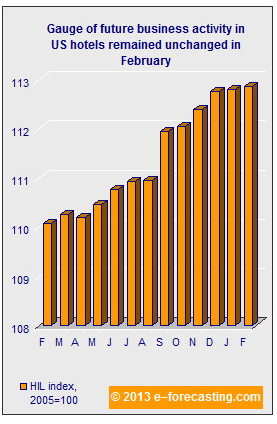The hotel industry is a multibillion dollar industry with a large circle of activities which includes accommodation, restaurants, events, theme parts, transportation, cruise line tours, and tourism.
Tourism is the largest sector of this industry, which envisages individuals travelling to some location outside their customary surroundings for pleasure or business purposes.
A hotel operates with several groups of people including managers of various departments, workers in direct operations such as bartenders, porters, kitchen staff, cleaners, and several other categories of workers who perform different related activities.
Human resources and marketing are, therefore, integral parts of the hotel industry (Petersen, 2011).
A very important factor for the success of a hotel is the “vacancy rate”. The fixed costs for maintaining a hotel, restaurant or a theme park are virtually the same whether they are fully occupied, half occupied or vacant.
This is the reason that hotels need to keep their customers happy and satisfied to maximize usage of their facilities (Melouney, 2013).

Like many hi-tech contemporary industries, it is not possible for the hotel industry to perform all tasks online. Hotels cannot make beds or make deliveries to rooms with the click of a mouse. However, hotels are now getting used to the idea of using technology to connect with customers and suppliers.
The most common competition practices among hotels cover rates offered for lodging, prices for meals, and extent of various facilities provided to guests.
Now much of this competition takes place online as individuals can obtain the desired information via the Internet, which enables them to plan their budgets and chose a hotel accordingly (Petersen, 2013).
Because of the recent recession, hotels had a lot of vacant rooms, which were kept closed so that they needed minimum maintenance. Complete maintenance has a negative impact on revenues, and hotels are in a dire need to economize.
However, with the economy improving and the recession receding, the hotel industry is in the process of recovery. Large hotel chains like the Intercontinental are quite optimistic that probably by late 2013 or early 2014 they will be having full rooms and high demand for their services, (Wessel, 2009)
Management needs to improve / upgrade hotel services to cater tourists who have certain expectations from their selected hotels. As the time has changed, the needs and demands of customers have also changed. It must be understood that what is popular today may be redundant tomorrow.
Therefore, planning for the future is one of the key requisites to stay in the hotel industry and keep ahead of the competition. Customers avoid hotels and restaurants that do not have good service.
Hotels must keep in mind that now their customers are much better informed because they have access to information themselves without relying upon tourism agencies or brochures from hotels to make comparisons (Carolan, 2008).
Hotels must make provisions for changes in occupancy rates, and envisage key drivers to stimulate growth. This means keeping up to date with emerging trends and technologies in order to improve their operational competence, which includes adequate investments on online media channels.
Since, the current trend is to focus on the sustainability of the environment it is, therefore, suggested that hotels must become eco-friendly to attract environment conscious tourists and business travellers.
People are generally now more conscious of their health and fitness, and this is why hotels must have such facilities as gyms, saunas, jogging tracks, indoor / outdoor games and they should include healthy food items on their menus (Petersen, 2012).
Such measures would make stronger customer relations. Hotels need to understand and implement the latest trends and technologies in the hotel industry. Better customer understanding means more customers, which would result in higher revenues.
Besides this, hotels need to streamline their suppliers and ensure that they are economical, reliable, and honest. Along with that hotels need to introduce and implement effective marketing and management strategies.
These are easily achieved by identification of variations in costs of different online media channels and choosing the right one. These steps undertaken along with sustainability measures will considerably increase hotel turnover (Wilkonson, 2009).
There are innumerable success stories in the hotel industry. Many hotels have started with just one hotel premise, and over the years they have established their businesses in many parts of the world.
Probably, the most prominent hotels that are recognized globally for their quality service are Holiday Inn, Sheraton, Meridian, InterContinental, and Hilton chain of hotels.
Besides these, there are many other good hotels throughout the world. Most of them started quite small and have built up their businesses and reputation because of excellent service, good food, and ability to maintain their facilities and standards to the best possible level.
Many of them are not known internationally because they have limited themselves to specific locations and do not have business chains in other countries. These hotels are well known and preferred by their guests who have been visiting them for many years.
Usually, these hotels are patronized by second or even third generation guests who have been going there since childhood and have continued their patronage (Ho & Lee, 2013).
Reference List
Carolan, M. (2008). Inter Continental Sees Recovery Next Year. Web.
Ho, P., & Lee, Y. (2013). Hong Kong’s New World Seeks Hotels IPO. Web.
Melouney, C. (2013). Short Stays, Strong Returns. Web.
Petersen, A. (2011). When Home Is Where the Hotel Is. Web.
Petersen, A. (2012). Checking In? Hidden Ways Hotels Court Guests Faster. Web.
Petersen, A. (2013). Test Driving a New Hotel. Wall Street Journal. Web.
Wessel, D. (2009). The Recession Doesn’t Spare Travel & Tourism. Web.
Wilkonson, T. L. (2009). Diplomats Help Boost Rates at World’s Most Expensive Hotels. Web.